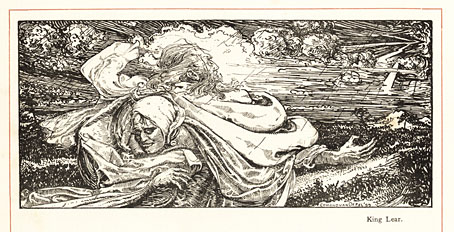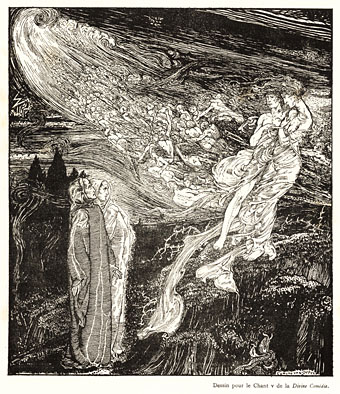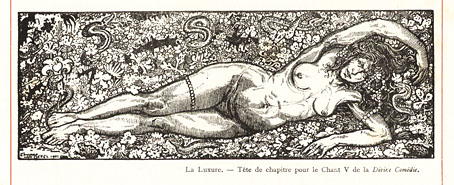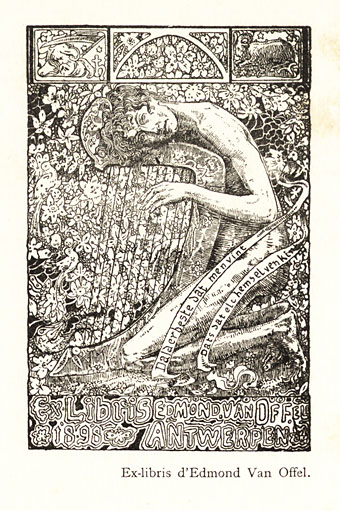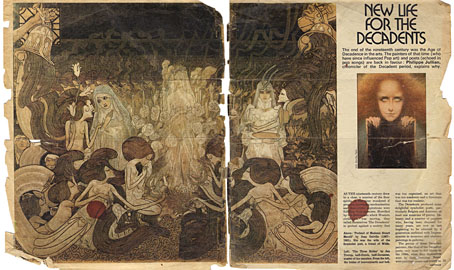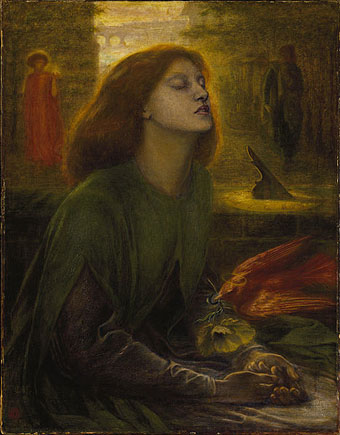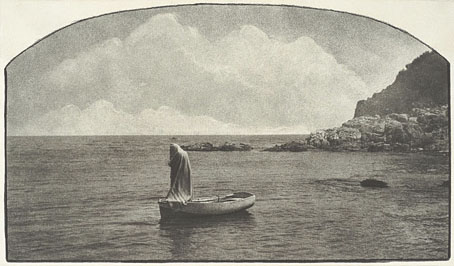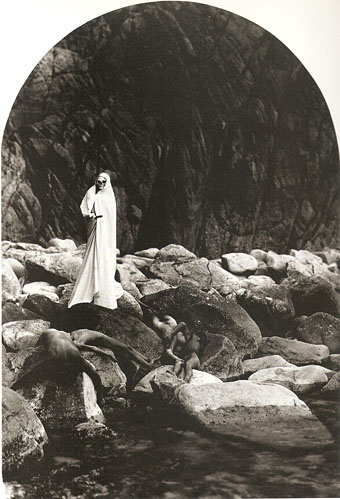Edmond van Offel was a Belgian artist who Philippe Jullian features in two of his books about Symbolist art but whose work I’d not seen anywhere else—at least until now. All the pictures here are from a collection published in Paris in 1902 which may be the one Jullian used for his selections. The book contains both Jullian drawings together with a great deal of other work comprising illustrations, vignettes, bookplates and also some of the artist’s writings. Offel’s combination of detailed line-work and attenuated figures is reminiscent of Charles Ricketts who may have been an influence.
Tag: Philippe Jullian
New Life for the Decadents by Philippe Jullian
This essay by cult writer Philippe Jullian appeared in an edition of the Observer colour supplement in 1971, shortly after Jullian’s chef d’oeuvre, Dreamers of Decadence, had been published in Britain. Esthètes et Magiciens (1969), as Jullian’s study was titled in France, was instrumental in raising the profile of the many Symbolist artists whose work had been either disparaged or ignored since the First World War. A year after the Observer piece, the Hayward Gallery in London staged a major exhibition of Symbolist art with an emphasis on the paintings of Gustave Moreau; Jullian alludes to the exhibition in his article, and also wrote the foreword to the catalogue. His Observer article is necessarily shorter and less detailed than his introductory essay, emphasising the reader-friendly “Decadence” over the more evasive “Symbolist”. But as a primer to a mysterious and neglected area of art the piece would have served its purpose for a general reader.
Many thanks to Nick for the recommendation, and to Alistair who went to the trouble of providing high-res scans that I could run through the OCR. The translators of the article, Francis King and John Haylock, had previously translated Jullian’s biography of Robert de Montesquiou.
*
New Life for the Decadents
The end of the nineteenth century was the Age of Decadence in the arts. The painters of that time (who have since influenced Pop art) and poets (echoed in pop songs) are back in favour: Philippe Jullian, chronicler of the Decadent period, explains why.
AS THE nineteenth century drew to a close, a number of the finer spirits of the time wondered if progress, increasing mechanisation and democratic aspirations were fulfilling their promises. Horrified by the direction in which Western civilisation was moving, they called themselves “The Decadents” in protest against a society that was too organised, an art that was too academic and a literature that was too realistic.
The Decadents produced some delightful symbolist poets, particularly Belgian and Austrian; at least one musician of genius, Debussy; and a number of painters who, having been despised for many years, are now at last beginning to be admired by a generation surfeited with Impressionists in museums and abstract paintings in galleries.
The genius of these Decadent painters, like that of the Decadent poets, only came to full bloom in the 1890s, when they themselves were in their twenties. Never were painting, music and poetry so close to one another. The gods of the Decadents were primarily Wagner and Baudelaire, then Swinburne and Poe. The Decadent movement, so active all over Europe, turned towards two great sources of inspiration: the Pre-Raphaelites, and a French painter whose glory was for a while eclipsed by the Impressionists but who is now once again accorded his place among the great—Gustave Moreau.
The women whom the Decadents loved and of whom they dreamt resembled the women created 30 years previously by Rossetti, Burne-Jones and Moreau.
Nothing could be more naturalistic than the artistic style elaborated by the Pre-Raphaelites in the middle of the nineteenth century. Dante Gabriel Rossetti’s model, inspiration, mistress and finally wife was the sweet and sad Elizabeth Siddal, on whom so many fin-de-siècle ladies had to model themselves on the Continent as did all the aesthetic ladies of England in the 1880s. She posed for Rossetti as Beatrix and as the Belle Dame sans Merci.
She was a rare spirit, about whom everything was nebulous and evanescent: the thick, wild hair; the tunic of a simplicity to challenge the elaboration of the crinolines then in vogue; the frail hands burdened with lilies; the gaze turned towards eternity. She also posed, fully dressed and lying in a bath, her hair outspread around her bloodless face, as Ophelia for another Pre-Raphaelite, Millais. Elizabeth died of pulmonary tuberculosis in 1862.
A macabre episode, which might have been imagined by Poe, was the exhumation of a sheaf of Rossetti’s poems that had been buried in Elizabeth Siddal’s coffin. When this symbol of the New Woman died, the grief-stricken poet had insisted on placing the poems inspired by her under her long hair before the coffin was sealed.
Beata Beatrix (1864–1870) by Dante Gabriel Rossetti.
Continue reading “New Life for the Decadents by Philippe Jullian”
The chimeras of Dimitrie Paciurea
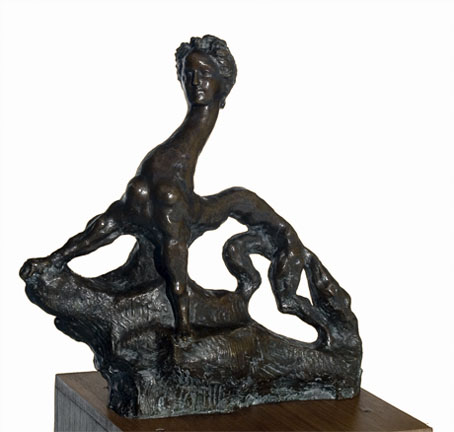
Chimera (1923).
One of the many commendable things about Dreamers of Decadence (1971) by Philippe Jullian is the use of the figure of the chimera to describe the impulse that drove the development of Symbolist art in the late 19th century. A chimera is a fabulous, hybrid creature which is also a metaphor for an unfounded conception or mental phantasm, and chimeras happen to be as popular in Symbolist art as the more familiar sphinx. Both creatures had been given a heady promotion in the fin de siècle imagination thanks to Gustave Flaubert’s extravagant Temptation of Saint Anthony whose final version appeared in 1874; the fluid and metaphoric nature of the chimera, however, makes for a more useful image in art.
Romanian sculptor Dimitrie Paciurea was born around 1874 (his birthdate is uncertain), and is one of those artists who perpetuated Symbolist themes in the 20th century by which time they were rapidly losing the little grace they once possessed. In addition to the profusion of chimeras seen here Paciurea was also sculpting fauns and Pan figures, further hybrids from the Symbolist menagerie. These photos are from WikiPaintings where the artist is rather fatuously categorised as an Impressionist.
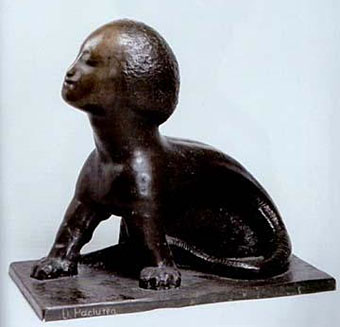
Chimera of the Earth.
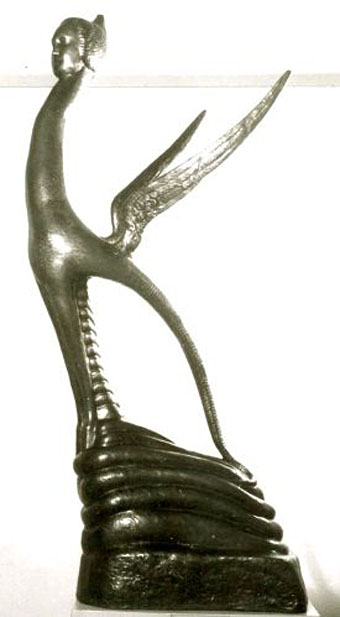
Chimera of the Sky.
Le Panorama Exposition Universelle
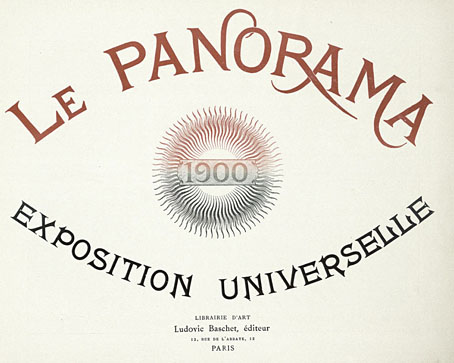
One day I really will have exhausted this subject but for the moment here’s another look at the Paris Exposition Universelle of 1900. I’d downloaded this photo album months ago from the excellent resources at the University of Heidelberg then promptly forgot all about it. The book is of interest for the variety of views it gives of the exposition; despite this being a world event that attracted a host of photographers and even (as we’ve seen) early filmmakers, the views you see are often the same remote shots of the major buildings.
Ludovic Baschet’s book compensates for this with photos by the Neurdein brothers, Étienne and Antonin (assisted by Maurice Baschet) which show many close views of the pavilions, including a couple I hadn’t seen before in any detail. The oddest thing about these views is that many seem to be composites, with figures from other shots dropped into the scenes; this may be more obvious to eyes schooled in the disparities of Photoshop. Baschet’s book also has the best views I’ve seen of the Swiss exhibit, a miniature village built in the 7th arrondissement complete with livestock, authentic milkmaids and a fake mountain. And is that a joke at Britain’s expense in the view of Edwin Lutyens’ surprisingly dull British pavilion? Philippe Jullian tells us that Paris endured a heatwave in the summer of 1900—there are many parasols in evidence—yet the British pavilion is shown with a rain-soaked pavement, and set against a mass of impending storm clouds.
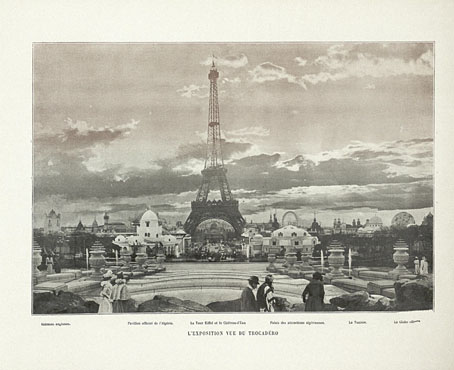
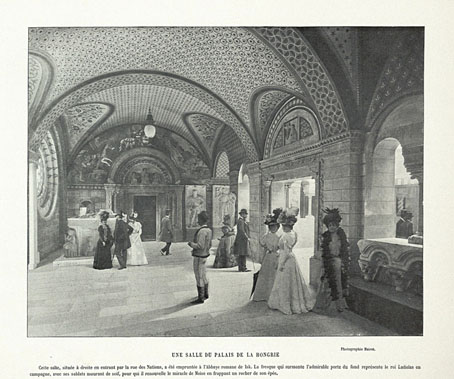
Weekend links 132
La Hora del Fantasma (no date) by Joaquim Pla Janini.
• Many of the art links featured here are tips from Thom Ayres, so it’s only right to point to his new album project which he’s funding through Kickstarter and embellishing with his own nature photography.
• Anne Billson is another writer beguiled by Philippe Jullian’s masterwork, Dreamers of Decadence. And thanks to Ms Billson for drawing attention to the insane opening of Crime Without Passion (1934).
• Does this fake ad for The Necronomicon use one of my Cthulhu pictures? Possibly. Get the picture for yourself in this year’s Cthulhu calendar. (My thanks to everyone who’s bought a copy so far.)
To break the ice, I talk about books: he is delighted to discover that I have read his beloved Denton Welch, also J. W. Dunne’s An Experiment With Time. I have found them in my old school library, and know both have been a tremendous influence on him in different ways. Knowing of his interest I also mention that I have just read Colin Wilson’s The Quest For Wilhelm Reich, published the year before. He likes Wilson, he says, jokes that “the Colonel” with his cottage in Wales in Wilson’s Return of the Lloigor and his own Colonel Sutton-Smith from The Discipline of DE are one and the same. On something of a roll, I mention Real Magic by Isaac Bonewits, and he acknowledges that it has “some good information” – but is much more enthusiastic about Magic: An Occult Primer by David Conway [years later I would discover that Burroughs & Conway had in fact exchanged letters on various subjects pertaining to magic, occultism, and psychic phenomena – but that is decidedly another story!]
Matthew Levi Stevens recalls The Final Academy and an encounter with William Burroughs thirty years ago.
• Locomotif: A short survey of trains, music & experiments: Gautam Pemmaraju on Kraftwerk, Pierre Schaeffer, Luigi Russolo and others.
• A flip-through of The Graphic Canon, volume 2. Wait to the end and you’ll see a couple of my Dorian Gray pages. Imprint has a review of the book.
• Julian Bell reviews two new books about Romantic painter Caspar David Friedrich.
• Alan Moore talks to The Occupied Times about art, education and anarchism.
• Colin Dickey reviews Vilém Flusser’s Vampyroteuthis Infernalis: A Treatise.
Las Parcas II (1930) by Joaquim Pla Janini.
• Michael Newton reviews A Natural History of Ghosts by Roger Clarke.
• Golden Age Comic Book Stories revisits the work of Sidney Sime.
• Front Free Endpaper asks “What’s in an inscription…?”
• Ghosts (1981) by Japan | Ghosts (2008) by Ladytron | Ghosts (2012) by Monolake.

